|
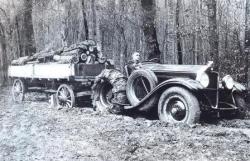
|
1 Heavy autotractor Meili used in forest, about 1937. Picture from book of Gerold Röthlin 'Meili, From Autotractor to modern special vehicles’ from Verlag Gerold Röthlin, Kriens, 2004, the reference book of Meili.
|
|
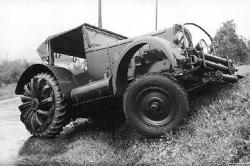
|
2 Meili Industrial tractor, 5,5 t, 100 hp, in the 30s for agriculture and all industrial transports, could be built from used cars and trucks. Picture from book of Gerold Röthlin 'Meili, from Verlag Gerold Röthlin, Kriens, 2004.
|
|

|
3 Steel wheeled Meili Autotractor. Picture of Gerold Röthlin Archives.
|
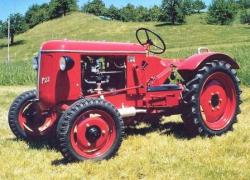
|
4 Meili P22 introduced in 1950 inaugurated the range of small tractors. Picture Gerold Röthlin Archives.
|
|
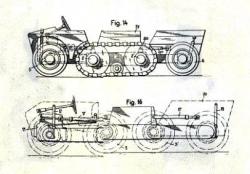
|
Metrac Meili patent showing a variant : tracks could be fitted in the middle of the vehicle.
|
|
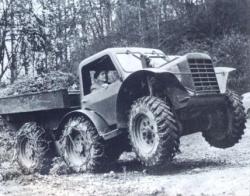
|
6 Meili Metrac first prototype in 1958. They can see front wheels of the vehicle raised by hydraulic actuators : the new idea. www.vmeili.ch
|
|
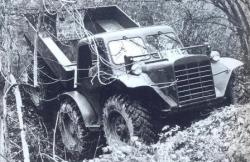
|
7 Meili Métrac, V position. www.vmeili.ch
|
|
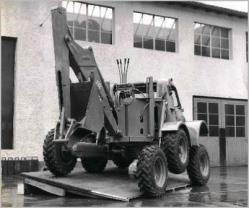
|
8 Meili Flex-Trac showing its ability, as the Metrac, to remain horizontal. Picture Gerold Röthlin Archives.
|
|
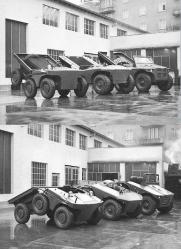
|
9 Meili Flex-Trac.The three dimensions of Flex-Track made in Shaffahousen whose two smallest were amphibious. Picture Gerold Röthlin Archives.
|
|
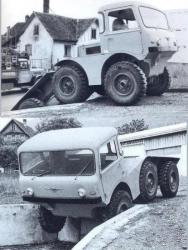
|
10 Meili Flex-Trac with 108 hp diesel Ford engine, payload 3 T, Mass 4.5 T, speed 65 km/h, marketed by J.C. Bamford, Rocester in 1961. Nice truck without success !
Picture Gerold Röthlin Archives.
|
|
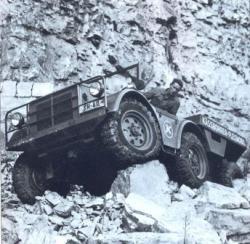
|
11 Kässbohrer Flexmobil in 1960 was a reworked Meili Flex-Trac. Picture Gerold Röthlin Archives.
|
|
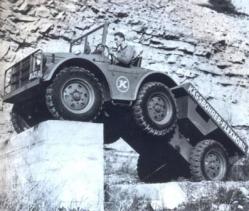
|
12 Kässbohrer Flexmobil crossing a wall. Picture Gerold Röthlin Archives.
|
|
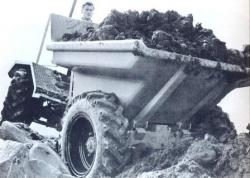
|
13 Dumper Meili D-1500. Agricutural tractor production at the beginning of the 60s lowered so it was decided to build a dumper sold by Charles Keller construction machinery. Engine MWM 31 hp, speed 22 km/h, On 80 built, 10 were sold, until Iraq. Picture Gerold Röthlin Archives.
|
|
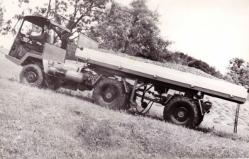
|
14 Meili Multimobil, little off-road semi-trailer 6x6 was marketed in 1964. www.vmeili.ch
|
|
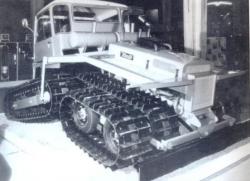
|
15 Meili Snow-Flex 112 hp tracked vehicle articulated in the middle and fitted with a hydraulic positive pitch control from 1966/67, incorporating the first idea of the Métrac. It was studied by Ernst Meili Jr. Picture from book of Gerold Röthlin ‘Meili, from Autotractor to modern special vehicles’ from Verlag Gerold Röthlin, Kriens, 2004.
|
|
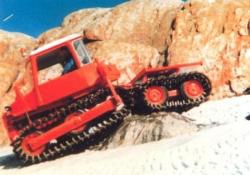
|
16 Meili Snow-Flex 112 hp tracked vehicle articulated in the middle and fitted with a hydraulic positive pitch control from 1966/67, incorporating the first idea of the Métrac. It was studied by Ernst Meili Jr.
Picture Gerold Röthlin Archives.
|
|
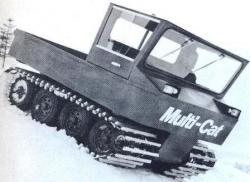
|
17 Meili Multicat at the end of the 60s were not for trial grooming. The Company manufactured tracked vehicles for personal or material transport. Many of these vehicles were built according to customer specifications. Picture Gerold Röthlin Archives.
|
|
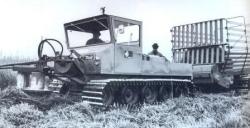
|
18 Meili tracked vehicle from 1970 used in Zurich District for maintenance of swamp lands. Picture Gerold Röthlin Archives.
|
|
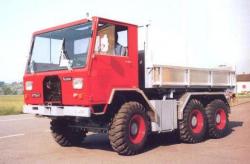
|
19 Meili VM-9000 6x6, heavy transporter for Alps, payload 7 t, 2 m maxi wide. About 1980. Picture from book of Gerold Röthlin ‘Meili, from Autotractor to modern special vehicles’ from Verlag Gerold Röthlin, Kriens, 2004.
|
|
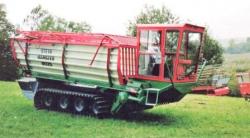
|
20 This is the first tracked transporter of Viktor Meili in 1975 for swamp land of Zurich district. V. Meili AG built now tracked vehicles instead E. Meili AG of his brother. He sold them in Switzerland and after in the world. Nowadays, The same improved model is called VM-1500 Transporter. Picture from book of Gerold Röthlin ‘Meili, from Autotractor to modern special vehicles’ from Verlag Gerold Röthlin, Kriens, 2004.
|
|

|
21 Combi-Model 2010 currently with front linkage and bucket. Picture Gerold Röthlin Archives.
|
|
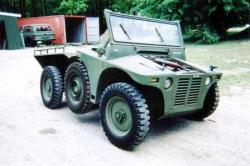
|
22 Clark Flex-Trac of 1961, of Clark Equipment, Battle Creek, MI, tested at Fort Knox. It was sold on www.armyjeeps.net in 2007 to a Company in Houston, Texas.
|
|
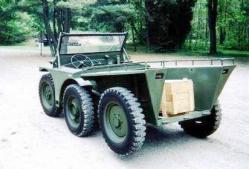
|
23 Clark Flex-Trac of 1961, of Clark Equipment, Battle Creek, MI, tested at Fort Knox.
|
|
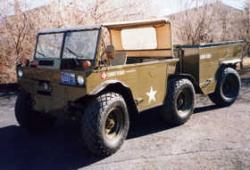
|
24 Gama-Goat first prototype. William (Bill) Janowski, Reno, Nevada, bought this prototype with Corvair engine from Roger L Gamaunt in 1987 and restored it in 2007.
http://www.voughtaircraft.com/heritage/products/html/gamagoat.html
|
|
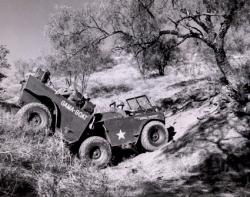
|
25 Gama-Goat first prototype delivered in September 30, 1960. Corvair engine. Pict J M M Archives.
|
|
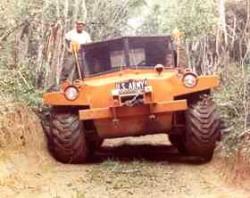
|
26 Gama Goat was tested in Thaïland in 1962 and 1965. In 1965, Goodyear terra-tires were suited with good performances and it was said that steering wheel (not assisted) was not too hard to maneuver.
|
|
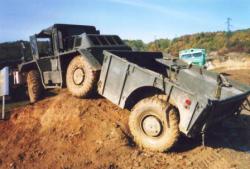
|
27 Gama-Goat pictured by J M M at Etrechy, France, November 1991.
|